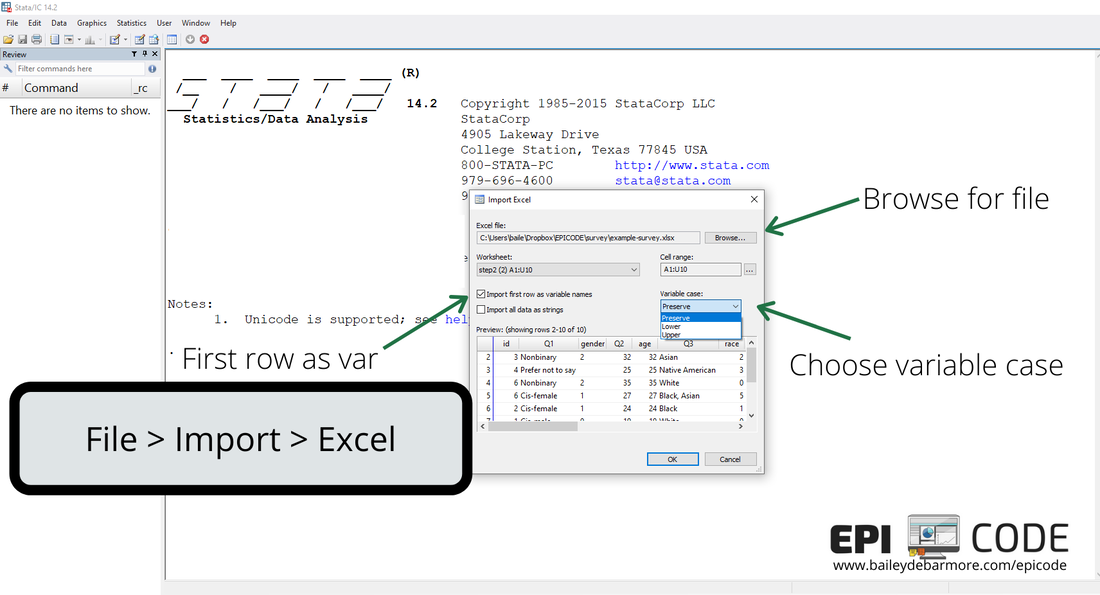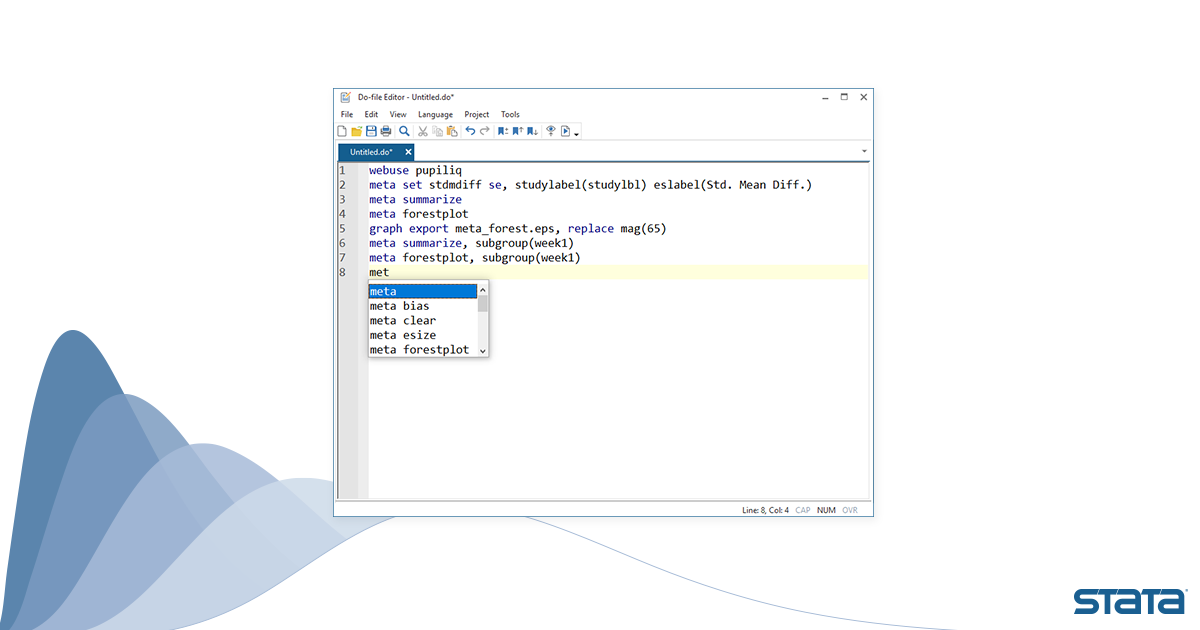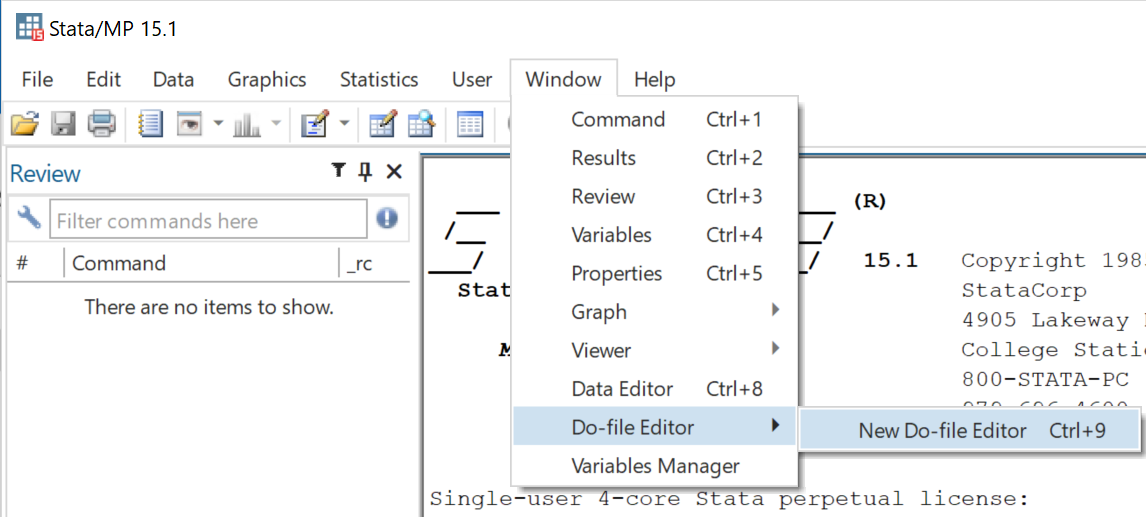

run test1.doĮxecutes the Stata commands in test1.do, but displays no output.īrings up do file editor with test1.do in it (windows only). set more offĮxecutes the Stata commands in test1.do, displays output. You can mark part of the program and click Tools-Do to run just that part of the program. You can run the program by clicking the menu Tools-Do. You can bring up the editor by typingĭoedit and then the name of the file. You can write do files using the Stata do file editor. If we type runĭofile2.do, it does the same thing as do test2.log, except that it runs silently, as you see below. In addition to the do command, there is also the run command. Quietly * temporarily close the log * quietly capture log closeĪs you would expect, the output is stored in The set more off tells Stata not to stop the outputĪnd say -more- when output exceeds one screen-full and set more on restores the pausing when the program ends.

*Īlso, the command set more off is used at the top of dofile2.do and set more on at theīottom. Without this option, Stata would refuse to log to an existing file. This is done in case you doĭofile2.do a second time. That the first log command uses the replace option. The do fileĭofile2.do uses the log command to store the output in the file test2.log and then closes the log file when it is done. Sometimes you want to save all the output so you can examine it later or print it. +-Īs you saw, the output of the do command is displayed to the screen one screen-full at a time.


These are called do files because you run them with the Let’s have a look atĭofile1.do using the type command.
#Do file stata series
do files in Stata.Ī do file contains one or more Stata commands and provides a convenient way to perform a series of Stata commands.
#Do file stata how to
log file, just select the Stata Log option under the “File Format” menu in the dialogue box.This module will show how how to create and run. This file format will allow you to open your log file in other programs and may be easier to manage than the. This will allow you to open the log file in Stata, but other programs will not read this type of file. The default in Stata is to save the file with the extension. To create a log file, go to “File” -> “Log” -> “Begin.” This will bring up a dialogue box where you will save your log file. The file carsdata.do has the following text Stata do-file carsdata.do written January 2009 Create a text log file that stores the results log using carsdata.txt, text replace Read in the Stata data set. This will also retain your commands, although it will not save them in the same way a do-file does (they will be embedded in the output). STATA DO-FILE (A Script or program or Batch File) Stata commands can be combined in a text file with extension. This is called a log file and can be helpful for you to save all of your output. In addition to recording all of your commands in a do-file, you can also have Stata create a copy of everything that is sent to the Results window, with the exception of graphs. To save your do-file, you can either use the icon on the toolbar or use the “File”->”Save As” menu while the do-file editor is active. When I am ready to run the analyses, I select the commands I would like to run (you don’t have to select any text if you want to run them all) and click on the last icon on the toolbar in the do-file window: That tells Stata that the next line is part of the same command. If you have a long command that you need on separate lines, add /// at the end of each line. Within this file, Stata will assume that each line is a new command unless you tell it otherwise. use relate.dta, clearĪfter I specify the data file, I enter the rest of the commands I want to run. This is to clear any data that Stata is currently working with. Notice that on the end of each command, I add the option clear. Here are three examples of the use command, one from a data set in the current working directly, one from the internet and one from a jump drive in a different working directory. If the file is not in the working directory that you are currently in, just specify which directory you want to pull the file from. The first command you will need is the use command to specify the file you want Stata to use.


 0 kommentar(er)
0 kommentar(er)
